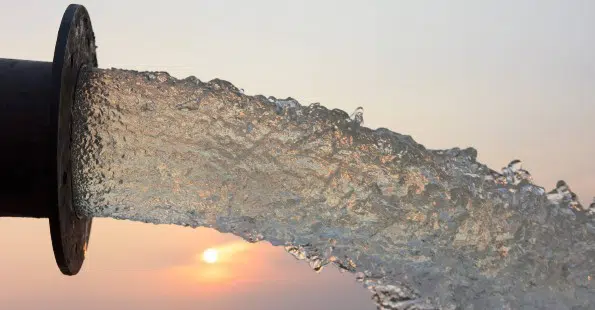To help the Living Water teams become shrewder and sharper well-hunters with Res2DInv, the organisation arranged a training session in Somotillo, Nicaragua.
The aim was to demonstrate hydrogeology and electrical resistivity methods for determining the best locations to site wells and to train staff in carrying this out effectively. They were introduced to concepts such as hydrogeologic systems and how to use maps, cross sections, fracture trace analysis, etc., as well as being trained in geophysical recording, processing, and interpretation techniques to find subsurface water.
The Somotillo area is underlain by volcanic tuffs of the Coyol Group with lower-lying areas covered by recent alluvial and colluvial sediments.
Fracture trace analysis was performed at each of the three sites (shown below) using aerial photography and terrain maps from Google Maps.

Sites of fracture trace analysis in Somotillo, Nicaragua
- An existing water well was present at Las Mesitas, so the resistivity survey was conducted centred on the well versus on a fracture trace.
- Since Las Mesitas had alluvial cover, nearby hills were used to identify lineations, but the level of detail was less precise than at Los Balcanes and El Caimito where bedrock was present near the ground surface. Right-angle turns are seen in stream beds at Los Balcanes and El Caimito.
- The proposed well at Los Balcanes was not on a lineation due to pre-existing land donation.

Las Mesitas survey line

El Caimito survey line

Los Balcanes survey line
Subsurface Conductivity
The conductivity of groundwater impacts the resistivity readings seen in the field. Below is a map of TDS data from existing LWI wells. The existing well at Las Mesitas had one of the lower conductivity readings indicating significant freshwater recharge at this location. The Las Mesitas well log is shown below. Geologically the well is located in alluvial gravel deposits along the Rio Gallo. The well location is upstream of a northeast-trending line of hills. The absence of tuffs in the drill log suggests faulting associated with the line of hills. Thick gravel accumulation in the well log suggests a gravelly terrace deposit created by the restricted flow and reduced stream gradient, “damming” the Rio El Gallo with a high gravel load from the higher topography to the north. This would create an area of high freshwater recharge above the bedrock.
At El Camito, the resistivity line is in an area of gently rolling hills with exposed bedrock near streams, suggesting a dissected colluvial deposit. The colluvial deposit could collect shallow fresh water and create conductivities in groundwater in the lower range.
At Los Balcanes the resistivity line is in an area with exposed bedrock at several locations and not crossing any streams. The conductivity of groundwater at Los Balcanes would be higher due to more rapid runoff and slower flow rates through the bedrock aquifer.
Resistivity Surveys
Las Mesitas, Dec 5, 2022. Weather low 90’s and dry. Ground hard.
The plan was to run a test VES (250 m) survey near a known well (N13.089444, W86.850556). This would provide a correlation between readings at a known water point, helping to determine what the resistivity of water looks like in the area. The resistivity reading at the depth of the water was 138 ohms/m. This means that we should expect the resistivity of the freshwater to be between 80 and 140 ohms/m. The actual readings could be somewhat outside of that range.

Las Mesitas resistivity survey

Las Mesitas resistivity survey
The RMS error for this model was 5% (below 5% is acceptable). There is a layer between 18 and 38 m with a resistivity consistent with the presence of water (139 ohms/m) and correlates with the well log.
Los Balcanes, Dec 6, 2022. Weather low 90’s and dry. Ground hard.
We ran a dipole-dipole survey with an N=9 and a=20 m. The BOL(0 m) was N13.10631, W86.88498, the EOL (220 m) was N13.10744, W86.88314 for 220 m. There were slight elevation changes (75-80 m).
Shown below is the resistivity inversion for the dipole-dipole survey. The RMS error is 1.6% (below 5% is acceptable). The software used for the inversion is Res2DInv. At a horizontal location of 115m and a depth of 25 m we see a resistivity consistent with water – 50 to 60 ohms/m.

Las Balcanes dipole-dipole resistivity survey inversion
El Caimito, Dec 7, 2022. Weather low 90’s and dry. Ground hard.
On the final day, we ran a dipole-dipole survey with an N=9 and a=20m. The BOL(0 m) was N13.06985, W86.82059, the EOL (220 m) was N13.07111, W86.82201 for 220 m. There were slight elevation changes (82-89 m).
Shown above is the resistivity inversion for the dipole-dipole survey. The software used for the inversion is Res2DInv. The RMS error is 3.2% (below 5% is acceptable). At a horizontal location of 90-110m and a depth of 25-35 m we see a resistivity consistent with water (90-130 ohms/m).

El Caimito dipole-dipole resistivity survey inversion
The team used IX1D software for the VES (1D) surveys, which is already well-known and has been used extensively. For the 2D they used a new version of Res2DInv. The hope was to drill these locations to better understand the models that were generated in this work.
The resistivity range of water at Los Balcanes is not consistent with Las Mesitas or El Caimito. This is believed to be due to higher conductivity in the groundwater at Los Balcanes due to lower freshwater recharge as discussed above.
